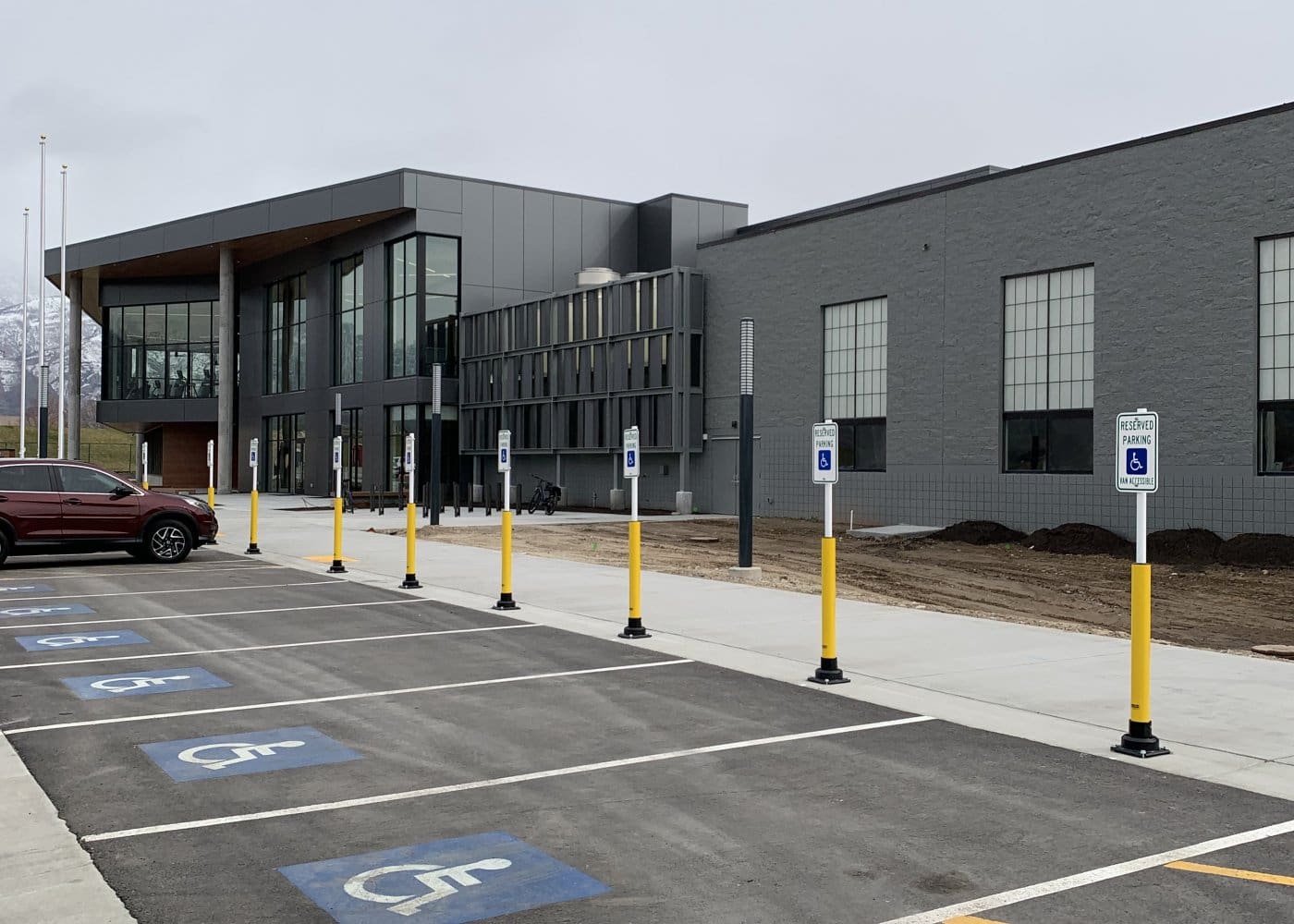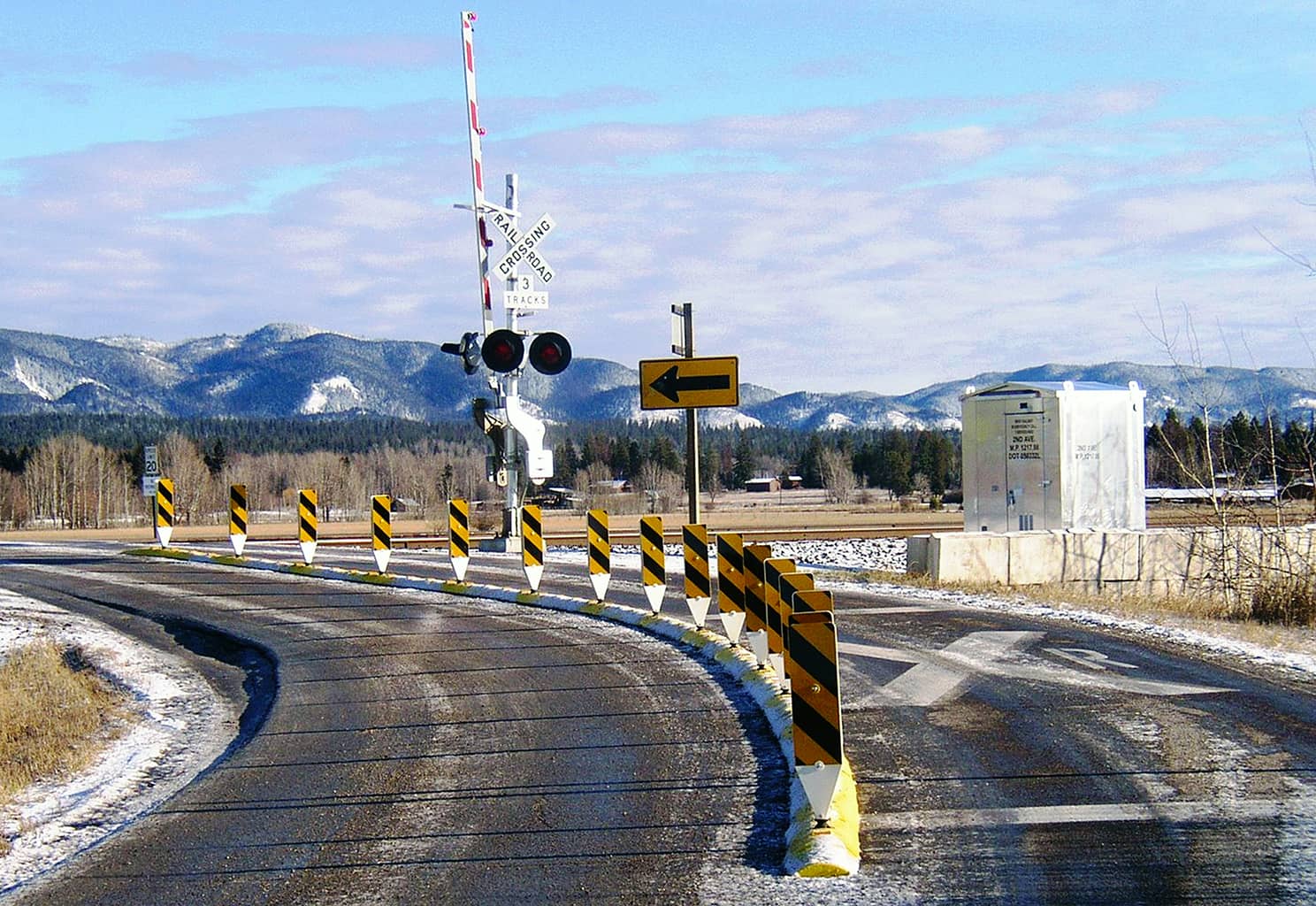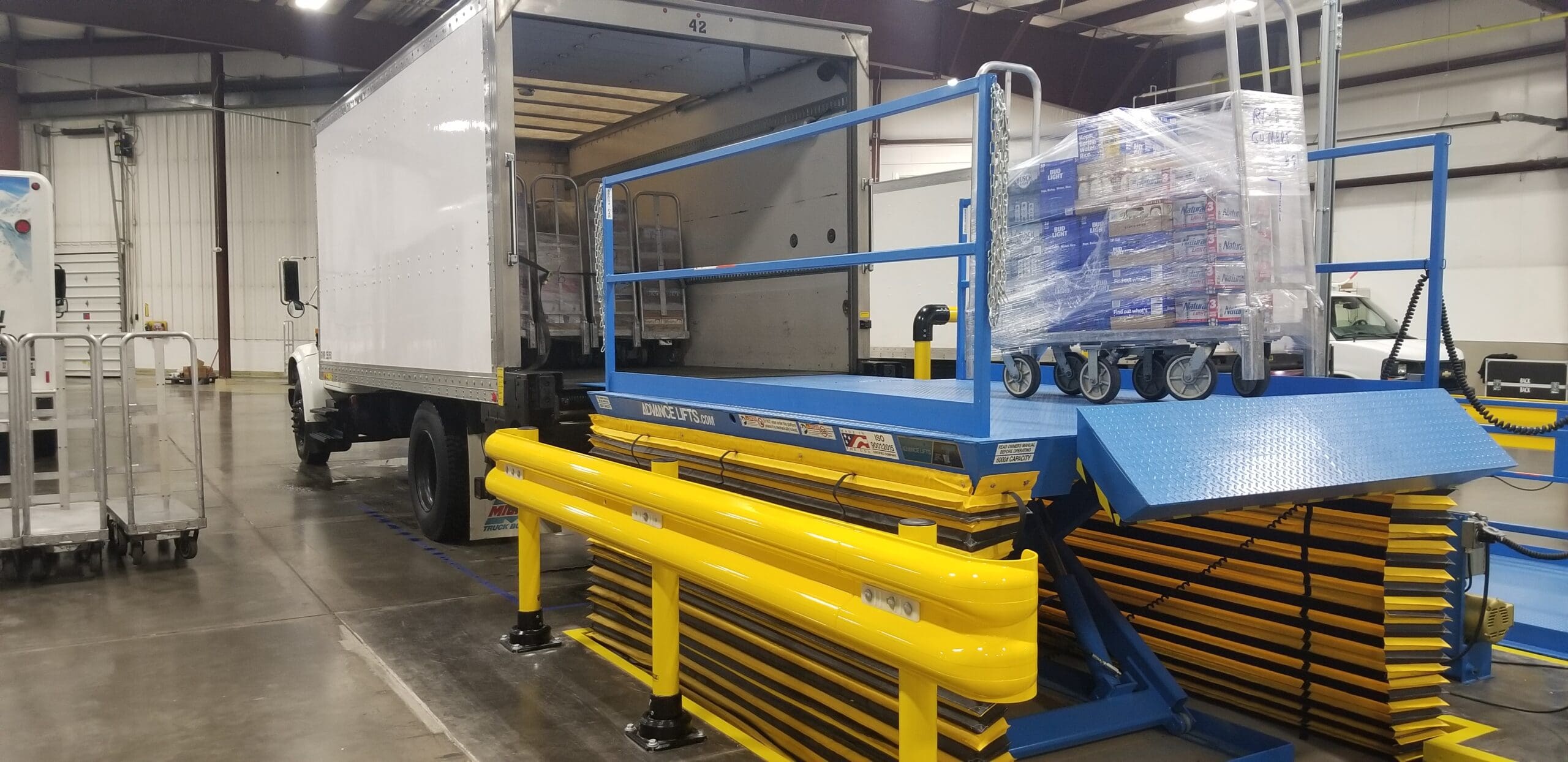State and federal building codes give stringent directions for installing handicap parking sign spaces and posts. Fortunately, these are straightforward and easy to follow. The following is a breakdown of the major rules.
NOTE: this is a high-level introduction to the topic. For specific rules in your locality, contact your state or city highway or building department.
Space Size: A handicap parking space should be a minimum of 96 inches wide, with an adjacent aisle of 60 to 96 inches.
Space Slope: A handicap parking space should have a slope no steeper than 1:48.
Signage Logo: A sign displaying the international symbol of accessibility should mark each spot. Crews should install the signs at a height of between 60 and 84 inches.
Exceptions to the Rules
In most locations, spaces used exclusively for delivery vehicles, buses, commercial trucks, vehicle-in-tow lots, or law enforcement are exempt from handicap parking sign post regulations.
Number of Handicap Parking Spots
The following is the minimum number of handicap spaces required for parking lots. This guide is based on the number of spaces within a given lot:
- Lots with 1 to 25 spaces: at least one space for handicapped drivers.
- Lots with 26 to 50 spaces: at least two spaces.
- Lots with 51 to 75 spaces: at least three spaces.
- Lots with 75 to 100 spaces: at least four spaces.
- Lots with 101 to 250 spaces: at least five spaces.
- Lots with from 151 to 200 spaces: at least six spaces.
- Lots with 201 to 300 spaces: at least seven spaces.
- Lots with 301 to 400 spaces: at least eight spaces.
- Lots with 401 to 500 spaces: at least nine spaces.
- Lots with 501 to 1000 spaces should set aside at least 2% of the total number of spaces for handicapped drivers.
- Lots with more than 1000 spaces should have a minimum of 20 set aside for handicapped drivers, with an additional space for every 100 above 1000; for example, a lot with 1100 spaces should have at least 21 reserved for the handicapped.
In all cases, at least one in every eight handicap parking spaces must be van accessible.
Space Location
Installers should place handicap parking spaces so that they offer the shortest possible route from the spot to a building entrance. In cases where a single lot serves multiple facilities, installers may place handicap parking spaces in multiple locations, as long as each space follows the shortest possible route to an accessible building entrance.
Access Aisles
Installers should place striped access aisles next to each handicap spot. They should make these aisles a minimum of 60 inches in width. The only exception to this rule is when a handicap spot is set aside for van parking. In such cases they should make the access aisle at least 96 inches in width. When possible, the crew should mark the aisle with a no parking sign.
Installing Handicap Parking Sign Posts
Holes for signposts should be between 3 and 8 inches below grade, with a minimum width of 9 inches to allow for an ample amount of anchoring concrete. Handicap parking signs are typically mounted on standard steel pipes filled with concrete. However, Impact Recovery System’s, Inc.® Sta-Rite Sign posts and Impactable Handicap Parking Sign Posts are ADA-compliant, and are designed to withstand bumper hits without damage to the post or the vehicle.
Penalties
Various state and local laws provide stiff penalties for unauthorized use of spaces with a handicap parking sign. Punishments range from fines to loss of driving privileges for a limited period of time.








